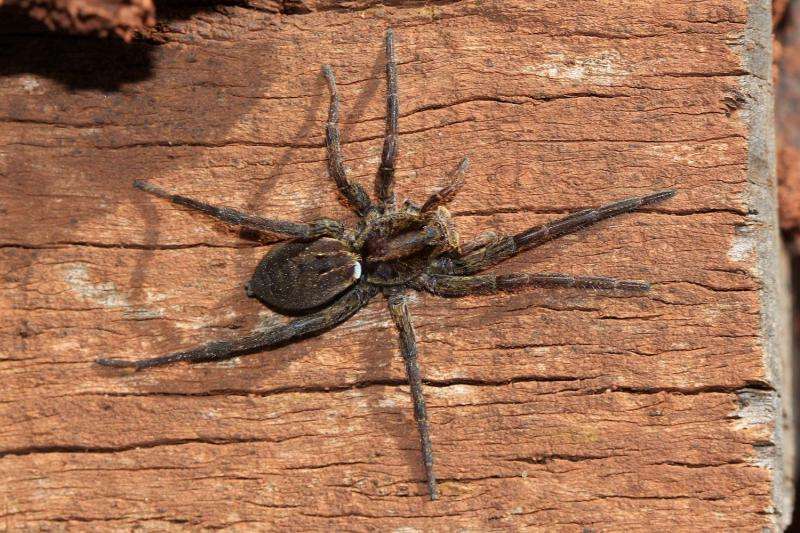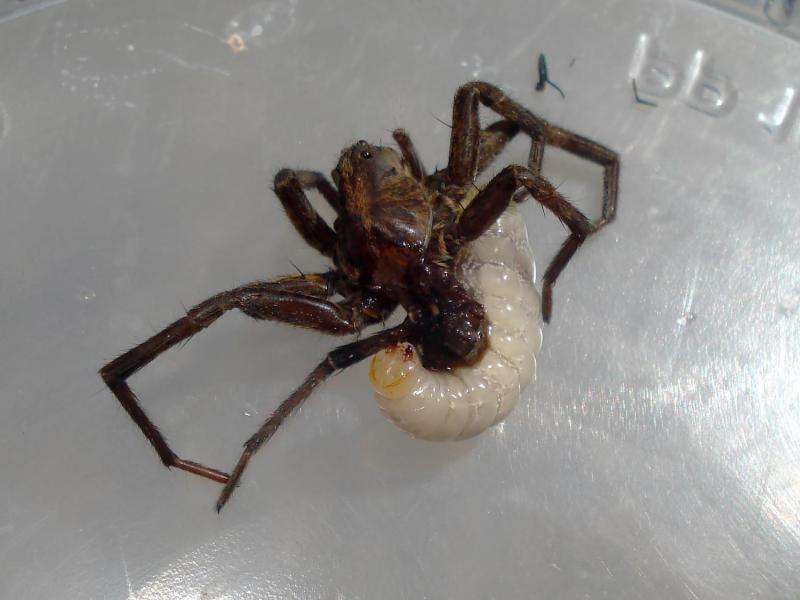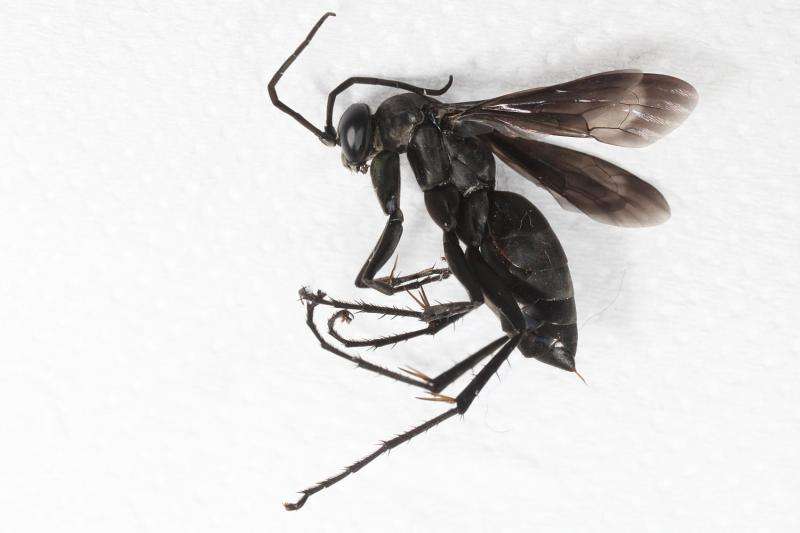To kill a wolf spider: Further observation of a spider wasp larva growing on its host

Having been attacked, paralysed and implanted with a wasp egg to its belly, a wolf spider carries on with its life fully mobile and active. At least, until it is time for the larva to reach out for its first solid meal at a certain development stage. The present study, conducted by a Brazilian team of scientists, led by PhD student Hebert da Silva Souza, Universidade Estadual de Campinas, Sao Paulo, and published in the open-access Journal of Hymenoptera Research, follows the entire cycle of larval development from the egg laying through the formation of a full-grown wasp.
The herein observed wasp species, called Paracyphononyx scapulatus, belongs to a well-known group of spider parasites, which after laying their eggs on a paralysed spider, let it recover and continue living fully mobile until the larvae are mature. However, little has been known about this curious behaviour of this wasp species in particular, since previous studies have already showed differences between the separate members of the genus.
To observe the whole cycle of the wasp larval development, the researchers caught a recently parasitised wolf spider and placed it in a plastic container.
While the larva grew and fed on the abdominal hemolymph, which is the analog to the blood in backboned creatures, its host did not show any peculiarities in its behaviour and even kept its routine being active at night and resting during the day. This is suggested to be attributed to the need of the larva to keep its host safe from predators, such as ants, which could otherwise eat the dead body.
However, ahead of its fifth and last development stage, the larva was seen to double its size and, in the morning, twenty days after the hatching of the egg, it killed its host and fully consumed it within the next forty-eight hours. Having left its host, the larva began to search for a place within the container to construct a cocoon, which took it sixteen hours. Thirty-two days later, a fully grown female wasp emerged.

In comparison, a relative of the observed spider wasp is known to manipulate its host's behaviour, making it to enwrap itself and the larva in a cocoon-like silken structure so that it is protected while feeding. Yet, it is not certain whether the observed larva's growth in captivity is not the reason why it had not induced similar behaviour.
In conclusion, the authors suggest that further investigation of the interaction between the two species could provide more information about the evolution of this kind of parasitism, which is likely to have developed independently among the wasp groups.

More information: Hebert da Silva Souza et al. Paracyphononyx scapulatus (Hymenoptera, Pompilidae), a koinobiont ectoparasitoid of Trochosa sp. (Araneae, Lycosidae), Journal of Hymenoptera Research (2015). DOI: 10.3897/JHR.46.5833
Journal information: Journal of Hymenoptera Research
Provided by Pensoft Publishers




















